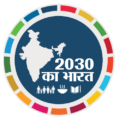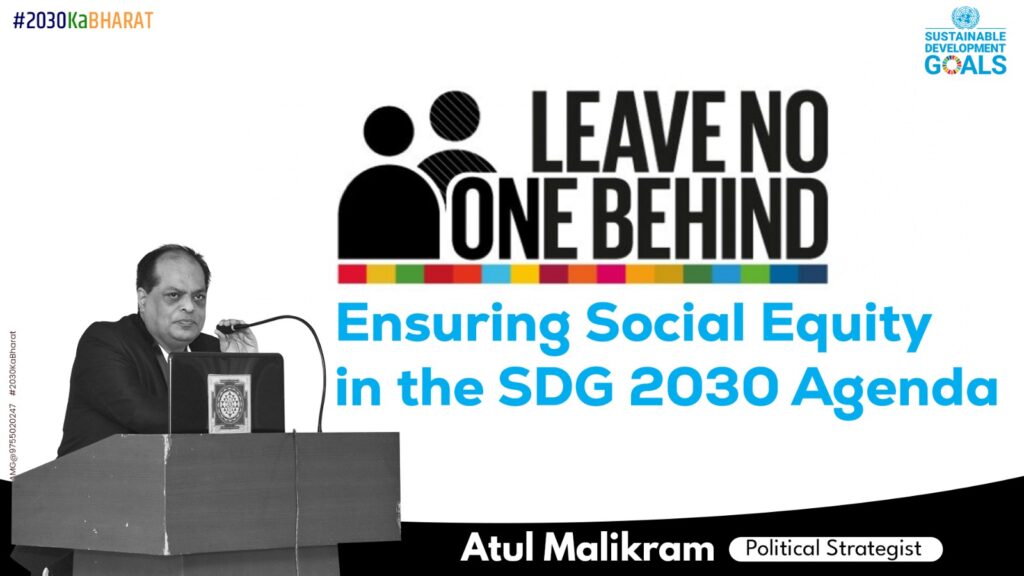In the grand tapestry of global development, the Sustainable Development Goals (SDGs) for 2030, often referred to as Agenda 2030, stand as a testament to humanity’s shared commitment to building a better world. These 17 interconnected goals are a blueprint for addressing some of the most pressing challenges facing our planet, from eradicating poverty to combating climate change. However, for the SDGs to truly succeed, they must embody a principle that transcends borders and ideologies: leaving no one behind. In this comprehensive inquisition, we delve into the heart of the SDG 2030 Agenda and its profound implications for social equity.
The Genesis of Sustainable Development Goals (SDGs)
The journey towards the SDG 2030 Agenda began in 2000 when world leaders gathered at the United Nations to adopt the Millennium Development Goals (MDGs). These eight goals aimed to address issues such as poverty, hunger, and disease, primarily in developing nations. Although the MDGs made significant progress, they faced criticism for not considering social equity comprehensively.
This criticism led to the formulation of the SDGs in 2015, a more ambitious and inclusive framework. With 17 goals and 169 targets, the SDGs encompass not only economic growth but also social and environmental dimensions, making them a holistic approach to global development. They set out to ensure that no one is left behind in the journey towards a more sustainable and equitable future.
The Essence of “Leaving No One Behind”
The central tenet of the SDG 2030 Agenda, encapsulated in the phrase “leaving no one behind,” underscores the commitment to social equity. It signifies that the benefits of development should be shared by all, regardless of their socio-economic, ethnic, or geographical background. This profound principle demands that we reach the most marginalized and vulnerable populations, lifting them up and giving them a voice in shaping their future.
To achieve this noble aspiration, we must first acknowledge the vast disparities that exist in our world. Inequities in income, access to education, healthcare, clean water, and basic amenities persist in both developed and developing nations. The SDGs aim to bridge these gaps and create a more equitable world.
#2030KaBharat: India’s Unique Approach
India, as one of the world’s most populous and diverse countries, has embraced the SDG 2030 Agenda with fervor. The hashtag #2030KaBharat encapsulates India’s commitment to achieving the Sustainable Development Goals and leaving no one behind. India faces unique challenges and opportunities in this journey towards social equity.
Poverty Alleviation and Economic Growth
One of India’s most pressing challenges is poverty. Despite significant economic growth, a substantial portion of the population still lives below the poverty line. To address this, India has launched ambitious programs such as “Make in India” and “Digital India,” focusing on job creation, skill development, and financial inclusion. These initiatives align with SDG 1 – No Poverty, emphasizing the country’s commitment to lifting its citizens out of poverty.
Quality Education and Gender Equality
Education is a cornerstone of social equity, and India recognizes its importance. The “Beti Bachao, Beti Padhao” (Save the Daughter, Educate the Daughter) campaign exemplifies India’s efforts to bridge gender disparities in education. By promoting female education, India strives to achieve SDG 4 – Quality Education while promoting gender equality (SDG 5).
Clean Energy and Environmental Sustainability
India’s growing energy demands and environmental concerns are addressed through initiatives like the National Solar Mission. By harnessing renewable energy sources, India not only works towards achieving SDG 7 – Affordable and Clean Energy but also contributes to global efforts to combat climate change (SDG 13).
Global Partnerships for Social Equity
Leaving no one behind is not the responsibility of a single nation; it is a global endeavor. The SDGs emphasize the importance of partnerships between countries, civil society, businesses, and individuals. International cooperation and resource sharing are essential to addressing complex challenges that transcend borders.
Through initiatives like the United Nations Sustainable Development Goals Fund, nations unite to support projects that target the most vulnerable communities. These collaborations reflect the true spirit of the SDG 2030 Agenda: a shared commitment to social equity on a global scale.
Challenges on the Road to Social Equity
While the vision of leaving no one behind is admirable, it is not without challenges. Inequalities persist, and achieving the SDGs requires overcoming numerous obstacles, including:
Data and Monitoring
Accurate data collection and monitoring are essential for measuring progress towards the SDGs. Many countries, especially those with limited resources, face difficulties in gathering and inquire into data effectively. Addressing this challenge is crucial to establish that interventions reach those who need them most.
Resource Allocation
Allocating resources to achieve the SDGs can be complex. Countries must balance competing priorities, such as infrastructure development, healthcare, and education. Effective resource allocation requires careful planning and strategic decision-making.
Conflict and Political Instability
Conflict and political instability can disrupt efforts to achieve social equity. In regions plagued by conflict, delivering essential services and implementing sustainable development initiatives becomes significantly more challenging.
Conclusion: A Collective Commitment to Social Equity
In conclusion, the SDG 2030 Agenda, with its overarching principle of leaving no one behind, is a beacon of hope in our quest for social equity. India’s dedication to the #2030KaBharat campaign exemplifies how a nation can embrace these goals and work towards a more equitable society.
However, the journey is long, and challenges are numerous. Achieving the SDGs demands unwavering commitment, international cooperation, and innovative solutions to address the complex issues that hinder social equity.
Let us remember that the SDGs are not just a set of goals but a shared vision for a better future, where no one is left behind. It is a call to action for individuals, governments, and organizations to come together and turn this vision into a reality. In this collective endeavor, we can truly ensure social equity for all.

